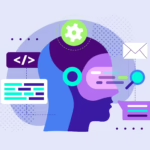E-commerce design: 6 killer tips to stimulate conversions

Even today, when e-commerce has ventured into every field imaginable, online stores have struggled to understand their users.
This is partly because e-commerce is industry agnostic. Be it ordering electronics, jewelry, clothes, watches, shoes, medicines – the list goes on.
And it isn’t just about ordering things, it goes from monitoring your health, daily chores to practically managing your life!
With tons of e-commerce stores available and new ones getting added to the inventory each day, there is an extra pressure to stand out.
This is where a great e-commerce design can make all the difference.
E-commerce stores have become so popular because of several benefits like better prices, variety, convenience, privacy, etc.
A shopping mall in December is not a Christmas shopper’s friend. When possible, purchase gifts online.
Shopping is the first thing that comes to our mind for the festivities like Diwali, Christmas, and New years’ eve and we are sure you might have a giant shopping list.
With the online stores for everything, people can avoid the long queues at shopping malls and shop right from their couch.
But with the advent of e-commerce, shopping is not just limited to grand occasions.
Today, people can buy anything instantly with a click of a button and get it delivered at lightning speed.
Due to the COVID situation, the world order has gone for a toss since 2020.
In 2021, more and more people are preferring to or forced to stay at homes and order everything online.
So, it is needless to say that this is the best time for e-commerce stores to put the best foot forward and embrace the new opportunities of a digitized world.
The best way to do stand out from the crowd is by understanding the needs and wants of the customers and make it as easy as possible for them to purchase online.
Therefore, mapping user journeys and pre-empting what the users are looking for is of paramount importance.
A smooth user experience that puts the focus on the users rather than the store itself is what an e-commerce store needs to cut through the crowd.
A solid e-commerce design will cover these points, but unfortunately good designs are a rarity.
Here are some design tips that can help e-commerce stores to get more conversions, retain customers for a longer time, differentiate themselves, and stay ahead of the competition:
E-commerce design tip #01: Creative Curated Shop

The humdrum sameness of the e-commerce sites has bored users. Online shopping, unlike regular shopping, was an exciting experience for many.
Today, most people consider online shopping as a chore rather than an opportunity to experience something cool.
People are hungrier for immersive interactions and looking for innovative ways to make their experiences more interesting.
At this time, an e-commerce design that incorporates creative cool interactions with vibrant colors and a content-focused approach are the only ways to grab attention.
There are a few simple design tweaks for e-commerce that can make shopping fun again:
– Use of interesting color schemes to make it aesthetically appealing
– Attractive animations that highlight product benefits
– Utilizing the power of micro-interactions
– High-quality product imagery
– Scroll-topping large visuals
E-commerce design tip #02: Go Device Agnostic
It is a well-known fact that users do not stick to a single device while shopping online.
Imagine a hypothetical scenario: a user wants to buy a shirt.

They casually browse through the website on their phone on their way home from work.
Once home, they move on to their laptop to look at the bigger images and finalizes a design.
They then get distracted by something else and completely forgets about it.
The next day while their commute to the office, they look at it again through their app and completes a purchase.
This was a simple scenario, there could have been many more steps here.
But still, they browsed on the mobile website, app, and full-size website before making a decision.
This goes a long way to show just how complicated user journeys can be.
One of the ways brands can handle this is by investing in a responsive website design.
And also ensuring that their users have the same experience across channels.
An adaptive or progressive e-commerce design strategy would help not only generate the much-required interest and also make sure that the users stick.
E-commerce design tip 03: In-built Customer Support

Amazing things will happen when you listen to the consumers.
The best customer support experience is personalized, empathetic, and effective. Smart design means treating users like friends.
This traditionally is associated with well-trained personnel who talk to customers, understand their needs, problems and provide them with quick solutions.
For example: if a customer calls up customer care to understand the delivery time to a particular pin code, the respondent can provide the list of available delivery timelines for the place.
Now let’s flip the coin.
Imagine if you can listen to the customers and integrate as much of this directly into your website/app as possible.
In the case of the previous example, the customer care receives a lot of queries about pin codes.
Then having an in-built option in your design to see the delivery timelines for all the serviceable pin codes would be customer-friendly.
E-commerce design tip 04: It’s Siri And Alexa’s World Now

Siri is no longer the only assistant. Microsoft has Cortana, Amazon has Alexa, Google has Now, and Google assistant.
Companies are experimenting with novel ways to disrupt the customer service space.
Now, these devices can learn to understand user emotions and provide suggestions.
So, online stores need to incorporate voice-assisted shopping into the overall e-commerce design.
E-commerce design tip 05: AR/VR creates real experiences
As e-commerce stores are looking to give their customers an immersive experience, virtual reality and augmented reality are being used in ever more creative ways.

AR and VR are allowing customers to view products from all angles, enhancing the presentation and bringing real-life experiences to E-commerce.
Online stores can create photo-realistic 3D scenes by using computer networking, display, interaction, and graphic technologies.
Brick and mortar stores are also pursuing ground-breaking ways to provide experiential centers for users to immerse themselves in the environment while feeling fresh.
Users need the extra ease and entertainment that comes with the use of AR/VR.
Creating these experiences as a part of e-commerce design will go a long way in ensuring use loyalty and product stickiness.
E-commerce design tip 06: Online moves into the real world

Online stores have now started to move from an online pure-play perspective to physical retail space with pop-ups and networks of brick-and-mortar stores.
This will develop physical presence and enhance customer fulfillment and enhance their shopping experience. Think about it, the reverse of this is also true, brick and mortar are moving online.
An imaginative designer might help in channelizing the entire efforts of merging your experiences offline and online so seamlessly that you don’t feel the difference.
Here’s a scenario: Imagine you are seeing a garment online and want to try it out before ordering and you clicked on the map link to find the nearest location.
The company sensed your intention and booked a cab for you to arrive at the store while the store manager is ready with the garment you want to try.
They offer you an empty trial room. Now that the customer has tried the garment, they could go to the mobile app or site and just pay online.
Bursting the queue they quickly get into the waiting cab and off the customer goes FEELING HAPPY!
Final Thoughts
E-commerce stores have a world of opportunities to adapt and evolve and new business models are appearing that will have a profound influence across the domain.
Technology, of course, plays a major role, but it’s not the only force at work.
Brands must ensure that the experience they create, provides genuine delight and value to the customer.
In this context, creating a seamless e-commerce design is the need of the hour.
One that enables online stores to build a seamless shopping experience and delight online users.
2020 was tilted towards online, but omni-experience is the way ahead.
And designing omni-experiences for users will be the key for e-commerce companies in the years to come.
If you are an e-commerce company, wanting to differentiate through digital design and transformation, contact us for a free design consultation.


